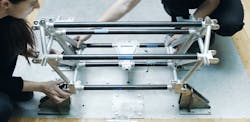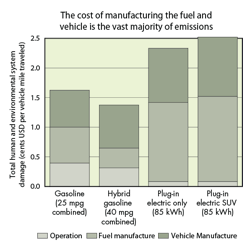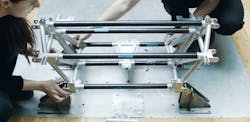Unique “Green” Approach Reinvents Auto-Manufacturing Methodology
Electric and hybrid drivetrains are a good solution for reducing a car’s carbon footprint during operation. However, vehicle and fuel manufacturing processes behind the end systems often have a much larger impact on the environment than the product itself. Divergent Microfactories (DM) addressed that aspect with a new manufacturing process for greener results in automobile production and when the vehicles hit the road.
The first key goal of the process is to dematerialize cars, or reduce the amount of material needed for a sturdy vehicle. The second is to democratize the process, or let smaller teams of designers and engineers control the designing and building processes. DM plans to set up smaller factories that don’t spend billions of dollars on machinery with pre-determined product outcomes. The “microfactories” will be capable of building 10,000 cars per year for local consumers.
DM’s solution lies in the manufacturing process, where “nodes,” or 3D-printed aluminum joints, provide durable interconnection between aerospace-grade carbon fiber rods. The nodes and rods make up the car’s chassis or framework, and have a very low manufacturing cost. A small team of designers at the microfactories assemble the nodes in an effort to “design, build, and scale a wide range of complex vehicle structures.”
DM’s first microfactory produced a prototype that features a 100-lb. chassis, which is about a tenth of the weight of a normal car. Its specifications are impressive, producing only a third of the emissions of an electric car, and costing only 1/50th of a normal factory’s capital cost. It accelerates from 0 to 60 mph in about two seconds and has double the power-to-weight ratio of a Bugatti Veyron. The framework and car are strong enough to support a 700-hp internal combustion engine and is claimed to be even stronger than the chassis of traditional vehicles.
Watch a video on the 3D-printed supercar, courtesy of Engineering TV, below:
The amount of cars being manufactured is increasing exponentially. It’s expected that more than four billion cars will be built in the next 35 to 40 years—double the amount that has been created in the past 115 years. With its new manufacturing process, DM leaves room for creativity and innovation for its engineers and designers while saving time and money, improving vehicle performance, and saving the environment on a large scale.
About the Author
Leah Scully
Associate Content Producer
Leah Scully is a graduate of The College of New Jersey. She has a BS degree in Biomedical Engineering with a mechanical specialization. Leah is responsible for Machine Design’s news items that cover industry trends, research, and applied science and engineering, along with product galleries. Visit her on Facebook, or view her profile on LinkedIn.


